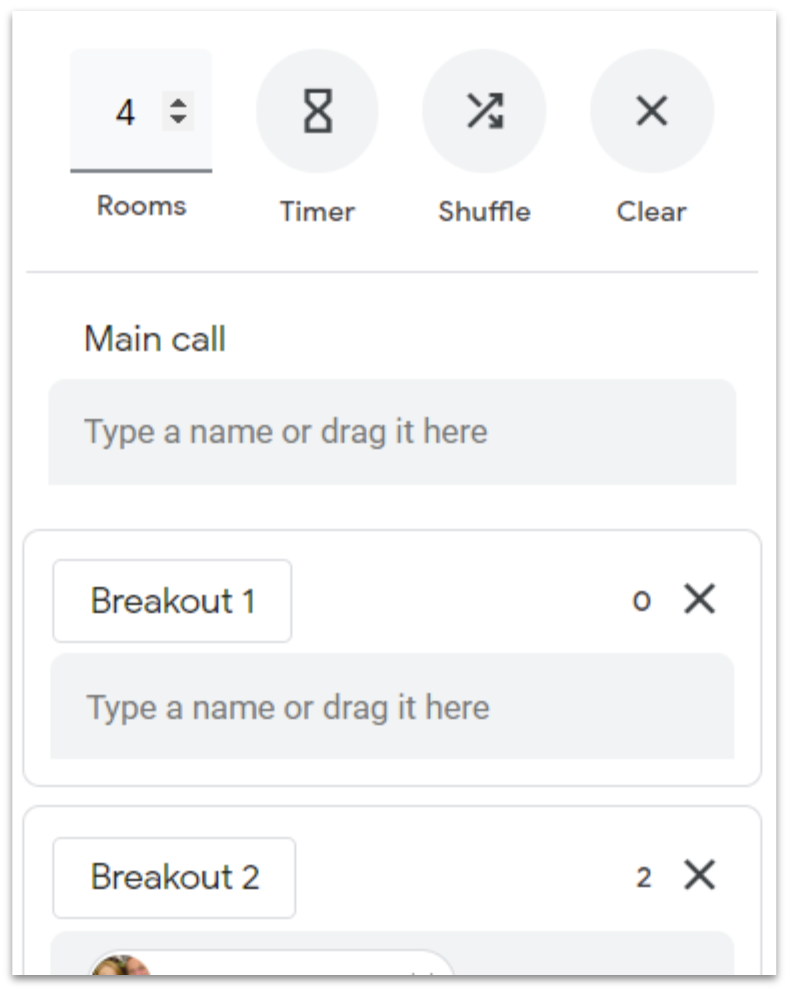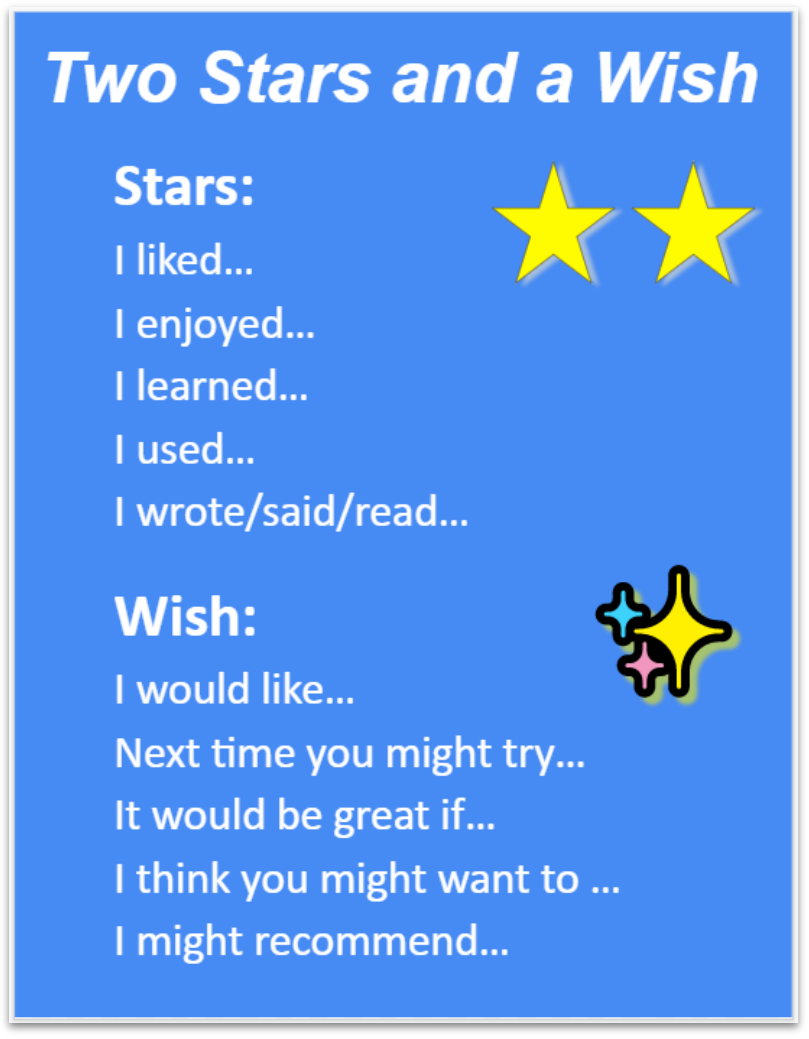Cooperative learning and small group work has been a staple of quality instruction for years. However, remote learning settings have required us to rethink how we can do this in a virtual learning environment. That’s where breakout rooms come into play. In fact, breakout rooms may be the single most effective way to engage students during live video classes. They give students an opportunity to have a voice, collaborate with their classmates, and stay connected with each other.
In order to maximize time for students to interact, direct instruction should be minimized during live sessions. Lectures can be easily flipped with students watching a video and then completing practice and processing activities. Student collaboration, while possible during asynchronous learning, is much more accessible and powerful during live class periods, so save as much time as you can for student interaction.
Nearly every video conferencing platform has a breakout room feature. Zoom offers breakout rooms as a premium feature, the Enterprise version of Google Meet released breakout rooms during the fall of 2020, and Microsoft Teams is in the process of rolling out this feature as well. If you do not have access to breakout rooms within your video conferencing platform, you can work around this limitation by creating links to multiple meetings and then assigning a meeting link to each group. While this is a bit more challenging to manage, it can work. If you are using a free version of Google Meet, you can try free Chrome extensions like Google Meet Breakout Rooms.

This screenshot illustrates the breakout room feature in the Enterprise version of Google Meet.
Manage Breakout Rooms
Facilitating successful breakout rooms requires intentional planning and a management strategy. Think about these questions as you plan.
- Grouping Students: This is an important question, and it may vary from activity to activity. Sometimes, random groups work well. These are especially quick and easy to facilitate. In fact, you could decide to break into groups in the spur of the moment if a teachable moment arises. Even with random groups, you’ll need to consider what group size will work best. Will you break students into partner groups, or will you want larger groups for more complex projects? Sometimes, random groups may not be the best choice, and you’ll want to be more intentional. Two common grouping strategies are to pull students together by learning level or a common interest. Polls can be a quick way to assess student interest. One additional strategy that can provide flexibility during class is to create an additional breakout room and leave it empty. This is helpful if you need to speak privately with a student or if another adult enters the room and needs to have a conversation without disrupting the entire class. In a sense, entering this room is like stepping out into the hallway for a conversation.
- Breakout Protocols: Be sure to establish ground rules for breakout rooms. After all, you won’t be in each room all the time, and you’ll want a safe and respectful space for students to learn. Whenever possible, have students help you determine the protocols. They know what a safe space looks and sounds like, and they will often come up with the same criteria you would establish. When they have a voice, however, they are more likely to abide by the rules. Because students are in a smaller space, one protocol might be to unmute both camera and microphone, so members can see each other and interact more freely than in the larger classroom. You and your class will need to determine what guidelines will work for you and your unique situation. This template offers you a starting point. Edit as needed to meet your needs.

- Clear Directions: Clear directions are essential. Again, you won’t be in each breakout room at all times. This is actually a good thing because it facilitates students taking more responsibility for their learning. At the same time, they need guidance, and this starts with clear directions. If students don’t know what to do, they can’t do it. Also, consider how you will distribute directions to each group. Be sure students have this information before breaking into separate spaces. One effective strategy is to include directions on any collaborative documents provided to groups. This allows them to access and review directions in the same space they will be documenting their group work. You may also want to think about how students will ask you questions while they are in breakout rooms. Some platforms (like Google Meet) include an “ask for help” button in each room to cue the facilitator to join a breakout group.
- Assigning Roles: One of the keys to effective cooperative learning is individual accountability. Each member should be accountable for part of the finished product. One way to help establish this is to assign group roles. While you probably need someone to keep track of the time and someone to take notes, consider more complex roles like researcher, clarifier, and designer. These roles are more central to the task and require a deeper level of involvement.
- Timers: Rather than assigning a member of the group to be the timer, you can have groups use digital timers. Some video conferencing platforms have timers built in. If yours has this, use it as this will likely be your simplest option. Otherwise, have groups use digital timers that are readily available and free online. This could be as simple as a YouTube timer embedded in a Google slide, a timer on a group member’s phone, the Google timer (just search for “online timer”), classroomscreen, or one of many free online countdown timers.
Engage Your Students
Once you have explored the logistics of facilitating breakout rooms, consider some of these popular strategies for engaging students during the breakout sessions.
- Small Group Work: Many of your in-class group activities will still work in a video meeting. The key is providing a collaborative workspace space for capturing digital notes and group work. Any of the Google or Microsoft 365 products work well for capturing ideas on documents, slideshows, drawings and spreadsheets. Virtual whiteboards are also powerful planning spaces. To help guide students during group work, consider preloading steps and directions into the collaborative workspace. This can help guide groups when they are on their own in a breakout. Of course, be sure to visit each breakout room to check in on how students are doing and to answer questions. Eric Curts offers some useful suggestions for how to manage this if you do not have breakout rooms natively integrated into your video conferencing software. He uses Google Meet for his example.
- 4 Corner Debate: Provide students with four positions on a controversial topic. Have them choose a position either by posting in the chat, filling out a poll, or completing a digital survey. Once you have teams balanced, send them to breakout rooms by topic and have them develop a case to support their position. Back in the main room, each team takes a turn presenting their case (either through a group spokesperson or by having each team member contribute one of the points).
- Virtual turn and talk (partner chats): In your face-to-face classroom, it is easy to have students quickly turn to an elbow partner and discuss an idea, share a point of view, or try to answer a question together. Virtual turn and talks can be facilitated by creating enough breakout rooms that students will be randomly paired up with another student. For example, if you have 30 students, create 15 breakout rooms. In some ways, this can be even quicker and more efficient than in an in-person class because distractions are reduced when students are quickly moved to a breakout room.
- Study buddy: This system is similar to the virtual turn and talk except students stay in these partner breakout rooms for longer periods of time. For instance, a math teacher might present a short lesson and then disperse students into breakouts with a study buddy. These study buddies then work through some practice problems together. This gives students a chance to collaborate, support each other, and help problem-solve. This is also a great way to facilitate having students read to a partner. The teacher can either rotate through the rooms or remain in the main room, so students can quickly locate the teacher to ask questions.
- Virtual jigsaw: This popular strategy works as well virtually as it does in-person. You divide the content up into chunks. Then you assign students to home groups, then to content teams by having students number off within each group. (You can also choose to assign the numbers yourself if you wish.) Assign students with each number to one of the chunks of information. Place students in groups by their assigned number to become experts on their chunk of the content. When time is up, each student returns to their home group. Students take turns teaching their assigned content to the other members of their home group.
- One-on-one student/teacher conferences: This strategy works well in a semi-synchronous environment where students are working independently while the live meet continues to run in the background. To make this work, set up a breakout room, and then, one at a time, call on students to meet with you in the breakout room. This allows you to have a private conversation with the student and provide personalized feedback and coaching. This would work great for writing conferences or project checks. A variation of this is to have students drop in as needed rather than scheduling sessions with every student.
- Group Reflection: It’s always good to get feedback from your students, and a short reflection activity can be an effective closure to a lesson. Reflection time gives students a voice and allows you to be responsive to their needs and continually improve your craft. While you may choose to have students reflect privately, breakout rooms can be a great way to facilitate collaborative reflection. Breakout rooms provide a private space for students to reflect as a group. You can create any group size that you feel is appropriate, even as small as pairs. One great reflection protocol that works well with any age group is “Two Stars and a Wish.” Students come up with two things they liked and one thing they wish might be different next time. This protocol keeps the conversation positive and provides a framework for responses.

